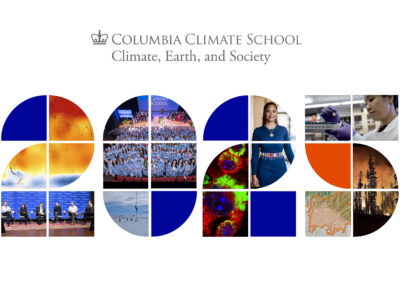This post is part of a short series highlighting some of the Earth Institute’s women scientists as part of the International Day of Women and Girls in Science on February 11. Read more about the day and our related blog posts here.
In 2015, the United Nations General Assembly designated February 11 as the International Day of Women and Girls in Science. The purpose: to move the needle toward achieving full and equal access to and participation in science for women and girls. Columbia University’s Lamont-Doherty Earth Observatory, which has a long tradition of pathbreaking women scientists, recognizes this day with pride and an enduring commitment to its cause.
Among the Lamont women who have rocked geoscience is Marie Tharp—who, while working as an assistant to geologist Bruce Heezen, drew the first map of the ocean floor. Later, in 1977, she and Heezen would publish the first map of the world’s ocean floor, which ultimately touched off one of the greatest paradigm shifts in earth science history, leading to a period of discovery known as the Plate Tectonics Revolution, which proved that Earth’s outer shell is divided into several plates that glide over the mantle, the rocky inner layer above the core.
Another titan of discovery, Joan Feynman, began her career at Lamont. Feynman, who died last summer, went on to become a world-famous astrophysicist and a pioneer in solar physics. Her obituary in the New York Times describes her work this way: “She predicted sunspot cycles and figured out how many high-energy particles were likely to hit a spacecraft over its lifetime, an advance that allowed the space industry to design satellites and capsules with greater longevity. Her crowning achievement was understanding solar activity and its influence on Earth, including auroras, those dazzling, psychedelic displays of colors — known as the aurora borealis in the Northern Hemisphere and the aurora australis in the Southern — that inflame the night skies.”
To say these two pioneers represent the tip of the iceberg when it comes to the women of Lamont is an apt pun. The video above highlights and celebrates just a few more Lamont women and their extraordinary contributions to helping the world understand the mystery and mechanics of Earth.
Want to learn about other inspiring women earth scientists? This slideshow showcases more than 50 women researchers who study oceans, volcanoes, ice sheets, and more. It is not a comprehensive list of all the female scientists affiliated with the Lamont Campus — only those who submitted their information to Lamont’s Office of Academic Affairs and Diversity for the slideshow — but it provides a broad snapshot of the diverse fields where women are making crucial contributions to earth science.



